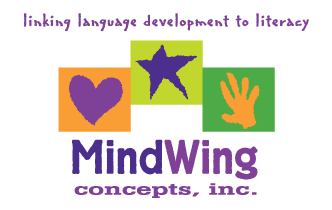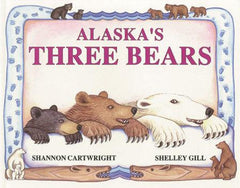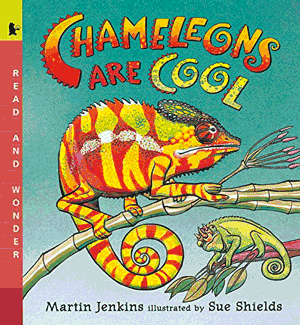Secure Checkout. FREE SHIPPING for Continental U.S. Orders over $60.
Menu
-
- Home
-
About Us
-
The Approach
-
Linking Language & Literacy
-
MindWing Learning
-
Learning Resources
-
SHOP
-
Blog
-
- About MindWing
- Our People
- Contact Us
- Your Account
- Login
-
United States (USD $)

Secure Checkout. FREE SHIPPING for Continental U.S. Orders over $60.

Room on the Broom! Halloween Book, Netflix Original & DIY Re-telling Wheel!
October 24, 2018 1 Comment
 If you are looking for a lively read for Halloween, check out Room on the Broom, written by Julia Donaldson and illustrated by Alex Scheffler. This book is presented in delightful rhyme, making it an ideal book for the younger set (Pre-K—Gr 2). It is a perfect selection to map out two Complete Episodes emphasizing a new Kick-Off. Below is the story mapped out from the witch’s perspective. Use Braidy the StoryBraid® or the Story Grammar Marker® to retell it to the students. At the end of this blog, we have also included a downloadable “Retelling Wheel” to be used by students to retell the story to one another...
If you are looking for a lively read for Halloween, check out Room on the Broom, written by Julia Donaldson and illustrated by Alex Scheffler. This book is presented in delightful rhyme, making it an ideal book for the younger set (Pre-K—Gr 2). It is a perfect selection to map out two Complete Episodes emphasizing a new Kick-Off. Below is the story mapped out from the witch’s perspective. Use Braidy the StoryBraid® or the Story Grammar Marker® to retell it to the students. At the end of this blog, we have also included a downloadable “Retelling Wheel” to be used by students to retell the story to one another...

Blending Narrative and Expository Text with “Alaska’s Three Bears”
August 31, 2018
 Maryellen recommended this book at a workshop I attended many years ago, and I found so many uses for it when our second, third, fourth, and fifth graders began to explore narrative and expository text structures. Using the picture book Alaska’s Three Bears shows the flexibility of the SGM® for both narrative and expository texts. She shared lessons and activities for use with grades K-5 and noted that this book could be used with a variety of grade levels (2-5) as it helped to support a number of her goals and objectives as a Language Arts Teacher. There is both a story and expository information presented. The book is one that can be used with a variety of goals/objectives in mind, during whole-group and/or small-group instruction, and with a wide span of grade levels...
Maryellen recommended this book at a workshop I attended many years ago, and I found so many uses for it when our second, third, fourth, and fifth graders began to explore narrative and expository text structures. Using the picture book Alaska’s Three Bears shows the flexibility of the SGM® for both narrative and expository texts. She shared lessons and activities for use with grades K-5 and noted that this book could be used with a variety of grade levels (2-5) as it helped to support a number of her goals and objectives as a Language Arts Teacher. There is both a story and expository information presented. The book is one that can be used with a variety of goals/objectives in mind, during whole-group and/or small-group instruction, and with a wide span of grade levels...

Spiders! 5 Books, Resources and Activities
August 07, 2018
 As so often happens when I see a certain book or project, it reminds me of particular lessons that I taught while teaching at the former Juniper Park School in Westfield, MA. A recent display of books on spiders at our local library did just that. Below are some ideas on spider-related books that you may want to try this summer or tuck them away in your files for future use. In addition to other resources, several of the selections below are Anansi trickster tales which were first told by the Ashanti people in Ghana. We begin our lesson suggestions with one of the Anansi stories adapted and retold by Eric A. Kimmel and illustrated by Janet Stevens. These were always popular with second and third graders. I liked to use them to reinforce the SGM® complete and interactive episodes and character traits...
As so often happens when I see a certain book or project, it reminds me of particular lessons that I taught while teaching at the former Juniper Park School in Westfield, MA. A recent display of books on spiders at our local library did just that. Below are some ideas on spider-related books that you may want to try this summer or tuck them away in your files for future use. In addition to other resources, several of the selections below are Anansi trickster tales which were first told by the Ashanti people in Ghana. We begin our lesson suggestions with one of the Anansi stories adapted and retold by Eric A. Kimmel and illustrated by Janet Stevens. These were always popular with second and third graders. I liked to use them to reinforce the SGM® complete and interactive episodes and character traits...

Tech Tuesday: Interpreting Research on Narratives and Autism
April 20, 2018
 In this Autism Awareness and Acceptance Month, we turn our attention more specifically on our students and clients with unique social learning and language characteristics. A recent (2017) study by Westerveld and Roberts, The Oral Narrative Comprehension and Production Abilities of Verbal Preschoolers on the Autism Spectrum, has a number of implications that I would like to interpret in the context of tools available for narrative intervention. The study involved assessment of preschoolers’ narratives (notably an uninvestigated area for preschool students with autism, according to the article) via presentation of a fictional narrative and administration of comprehension questions and a retelling task. A large grouping within the sample did not produce a retelling that could be analyzed, but the 19 that did were assessed for length, semantic diversity, grammatical complexity and accuracy, intelligibility, inclusion of critical events, and narrative stage. The article notes that most of the research on spontaneous language of preschoolers with autism has focused on free play, rather than the ability to pull language together into narratives...
In this Autism Awareness and Acceptance Month, we turn our attention more specifically on our students and clients with unique social learning and language characteristics. A recent (2017) study by Westerveld and Roberts, The Oral Narrative Comprehension and Production Abilities of Verbal Preschoolers on the Autism Spectrum, has a number of implications that I would like to interpret in the context of tools available for narrative intervention. The study involved assessment of preschoolers’ narratives (notably an uninvestigated area for preschool students with autism, according to the article) via presentation of a fictional narrative and administration of comprehension questions and a retelling task. A large grouping within the sample did not produce a retelling that could be analyzed, but the 19 that did were assessed for length, semantic diversity, grammatical complexity and accuracy, intelligibility, inclusion of critical events, and narrative stage. The article notes that most of the research on spontaneous language of preschoolers with autism has focused on free play, rather than the ability to pull language together into narratives...

Chameleons Are Cool! Listing, Describing & Art
April 13, 2018
 Who doesn’t love chameleons? I remember when I saw this book in our school library many years ago! I couldn’t wait to use it with our second grade students featuring the SGM List Map and Descriptive Map. At the time, I travelled from class to class, K-2, and brought SGM Marker and Braidy the StoryBraid, narrative and expository elements, into the classrooms. This time around, I created an informational sheet for grade 2 from various sources to begin our lessons. Notice how the information could be easily entered on an SGM Descriptive Map using the categories Physical Appearance, Habitat, Food and Eating, Young, and Special Characteristics. We completed the project in three sessions...
Who doesn’t love chameleons? I remember when I saw this book in our school library many years ago! I couldn’t wait to use it with our second grade students featuring the SGM List Map and Descriptive Map. At the time, I travelled from class to class, K-2, and brought SGM Marker and Braidy the StoryBraid, narrative and expository elements, into the classrooms. This time around, I created an informational sheet for grade 2 from various sources to begin our lessons. Notice how the information could be easily entered on an SGM Descriptive Map using the categories Physical Appearance, Habitat, Food and Eating, Young, and Special Characteristics. We completed the project in three sessions...

Tech Tuesday: La La Land, Part 2
February 20, 2018
 I previewed last month that this month’s post would discuss some of those exemplar pairings specifically. Before we crack some books and launch some apps, a word about analyzing contexts. For both books and apps, it can help if they have what I like to call a “Speechie” quality. You can read more about this along with the FIVES criteria (Fairly Priced, Interactive, Visual, Educationally Relevant, Speechie). Breaking down the Speechie part, we can ask ourselves if the book or app is a context for speech and language development: • Does it have a narrative structure that can be used for intervention, considering Story Grammar Marker® or Braidy the StoryBraid® as a tool (this includes apps that allow you to make your own choices such that a story unfolds)? • Does it provide or allow you to interact with informational language...
I previewed last month that this month’s post would discuss some of those exemplar pairings specifically. Before we crack some books and launch some apps, a word about analyzing contexts. For both books and apps, it can help if they have what I like to call a “Speechie” quality. You can read more about this along with the FIVES criteria (Fairly Priced, Interactive, Visual, Educationally Relevant, Speechie). Breaking down the Speechie part, we can ask ourselves if the book or app is a context for speech and language development: • Does it have a narrative structure that can be used for intervention, considering Story Grammar Marker® or Braidy the StoryBraid® as a tool (this includes apps that allow you to make your own choices such that a story unfolds)? • Does it provide or allow you to interact with informational language...
